Dog moms looking for a fun and creative way to bond with their kids and furry friends can turn to DIY dog toys. Making your own dog toys not only saves money but also provides a sense of accomplishment and satisfaction. Plus, it's a great way to repurpose old items and reduce waste.
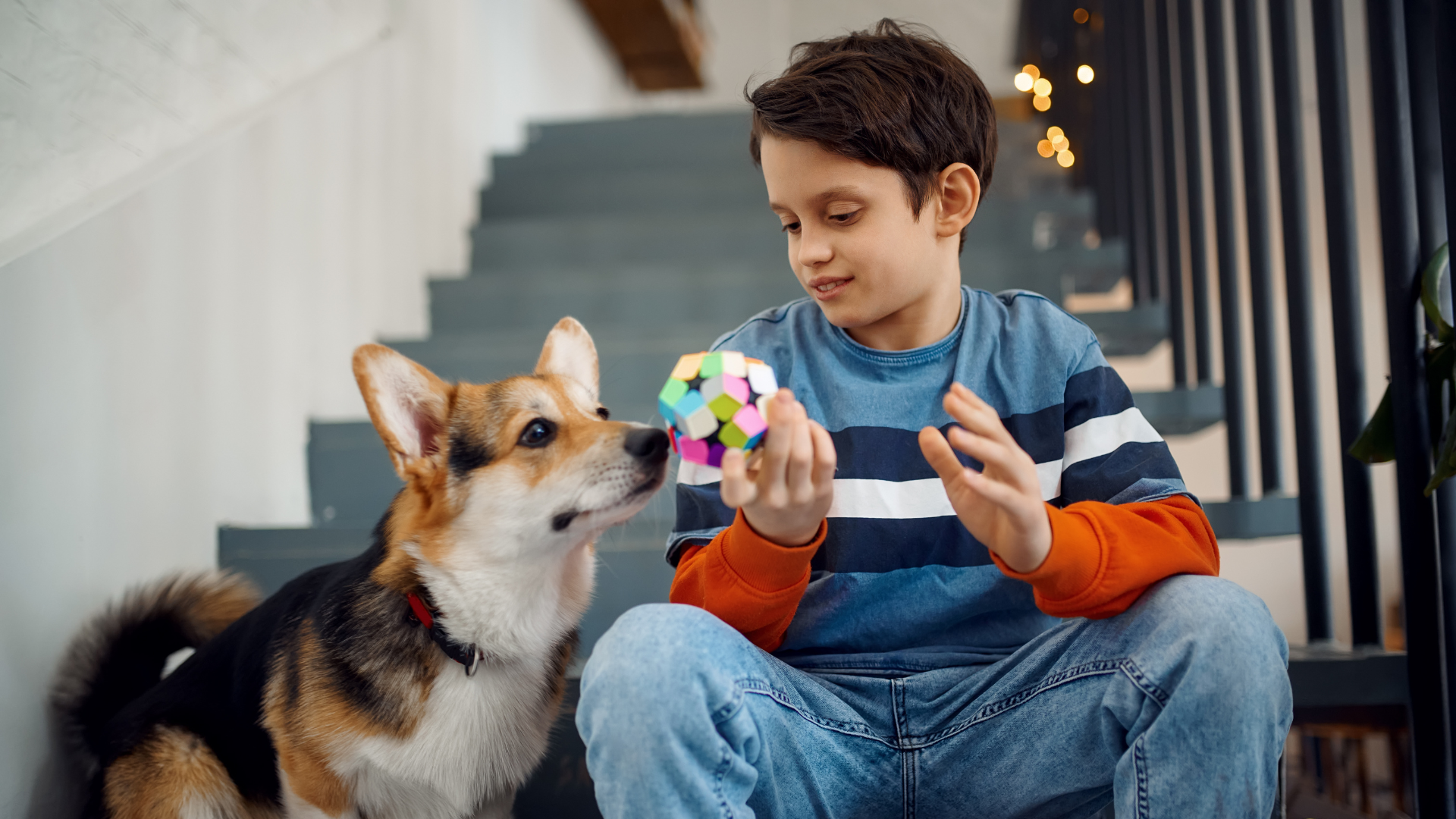
Creating DIY dog toys with your kids can also teach them the importance of recycling and upcycling. It's a great opportunity to show them how to be resourceful and creative while also caring for animals. Plus, the process of making the toys can be a fun and educational experience for both kids and dogs alike. From tug toys to treat dispensers, there are endless possibilities for DIY dog toys that can be made at home with simple materials.
Understanding Your Dog's Play Preferences
Dogs love to play, and as a dog mom, it's important to understand your dog's play preferences. Knowing what your dog likes to do can help you create DIY dog toys that they'll enjoy playing with.

Identifying Your Dog's Favorite Activities
The first step in understanding your dog's play preferences is to identify their favorite activities. Every dog is different, and what one dog loves, another may not be interested in at all. Some dogs love to fetch, while others prefer tug-of-war or chewing on toys.
To identify your dog's favorite activities, try playing different games with them and see which ones they enjoy the most. You can also observe your dog's behavior when they're playing with different toys to see which ones they prefer.
Safety Considerations for Dog Toys
When making DIY dog toys, it's important to keep safety in mind. Not all materials are safe for dogs to play with, and some can even be harmful if ingested.
Avoid using materials that can easily break apart, such as plastic bags or small pieces of fabric. These can be a choking hazard or cause intestinal blockages if swallowed. Also, be careful when using materials that can be toxic to dogs, such as glue or paint.
When in doubt, stick to materials that are specifically designed for dogs, such as rope, tennis balls, and rubber toys. These materials are safe for dogs to play with and are less likely to cause harm if ingested.
By understanding your dog's play preferences and keeping safety in mind, you can create DIY dog toys that your furry friend will love to play with.
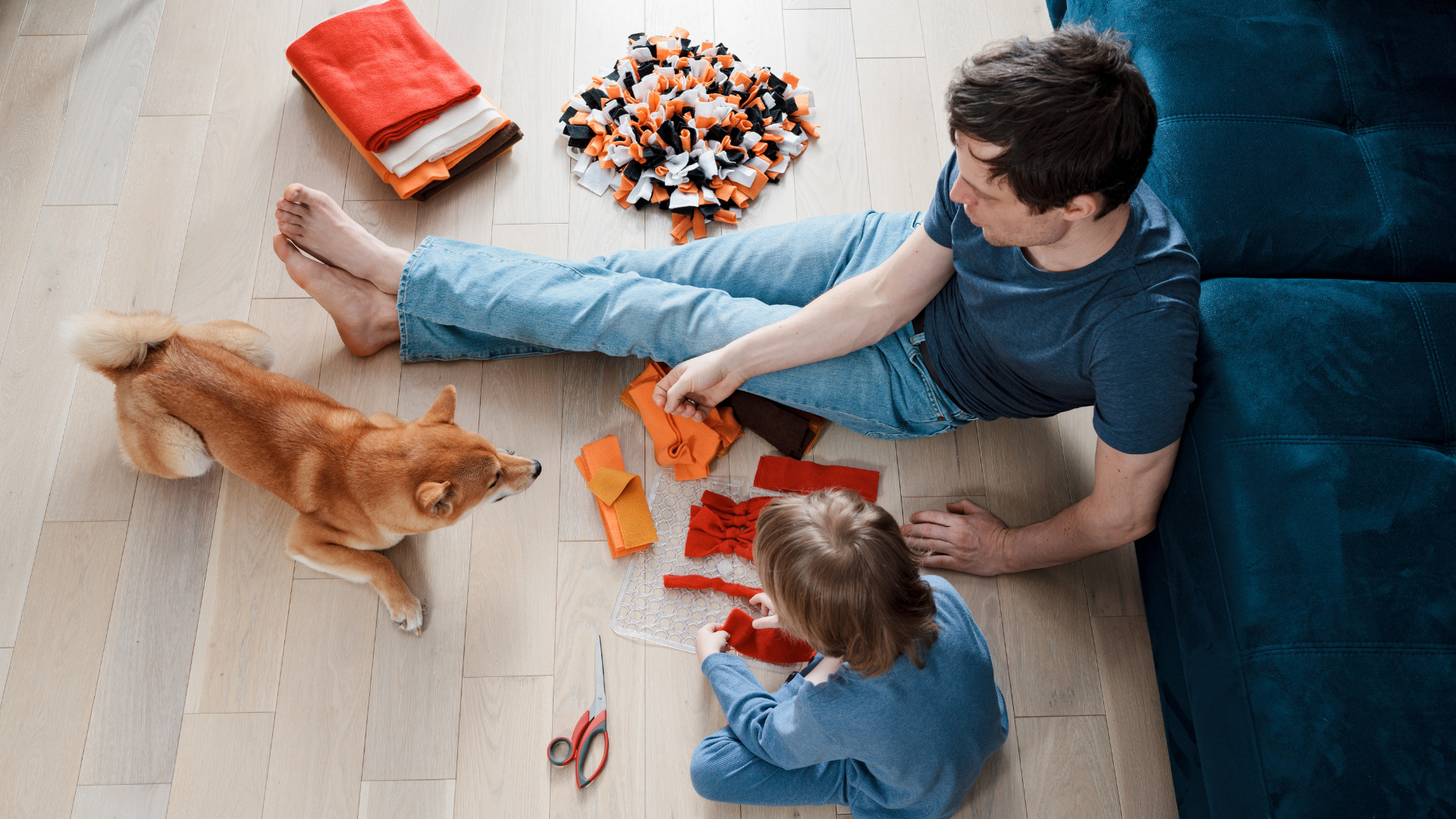
Benefits of DIY Dog Toys
Making DIY dog toys with your kids has several benefits, both for the kids and their furry friends. Here are a few reasons why you should consider making your own dog toys at home.
Strengthening the Bond Between Kids and Pets
Making DIY dog toys can be a fun bonding activity for kids and their pets. By involving children in the process of making toys for their dogs, they can learn more about their pets' likes and dislikes, as well as their behavior and personality. This can help children develop a deeper understanding and appreciation for their pets, which can lead to a stronger bond between them.
Encouraging Creativity and Problem-Solving
Making DIY dog toys also encourages creativity and problem-solving skills in children. By coming up with their own ideas for toys and figuring out how to make them, kids can exercise their imagination and critical thinking skills. This can also help boost their confidence and sense of accomplishment when they see their creations come to life.
In addition, making DIY dog toys can be a great way to recycle and repurpose old household items, such as t-shirts or socks, which can teach children the importance of sustainability and reducing waste.
Overall, making DIY dog toys with your kids can be a fun and rewarding activity that benefits both your children and their furry friends.
Gathering Materials
When it comes to making DIY dog toys with your kids, it's important to gather the right materials. This section will cover two important aspects of material gathering: recycling household items and choosing dog-safe materials.
Recycling Household Items
One of the best ways to save money and reduce waste is by recycling household items into dog toys. Some common household items that can be turned into dog toys include old t-shirts, socks, and plastic bottles.
To make a t-shirt or sock toy, simply cut the fabric into strips and braid them together tightly. This creates a durable rope-like toy that can withstand rough play. Plastic bottles can be turned into treat-dispensing toys by cutting holes in the sides and filling them with small treats or kibble.
Choosing Dog-Safe Materials
When choosing materials for DIY dog toys, it's important to prioritize safety. Avoid using materials that can be easily chewed or swallowed, such as small plastic pieces or foam. Instead, opt for materials that are durable and non-toxic, such as natural rubber or rope.
It's also important to consider the size of the toy in relation to your dog's size. Small dogs may be more comfortable with smaller toys, while larger dogs may require larger toys to avoid choking hazards.
By gathering the right materials, you can create safe and fun DIY dog toys with your kids.
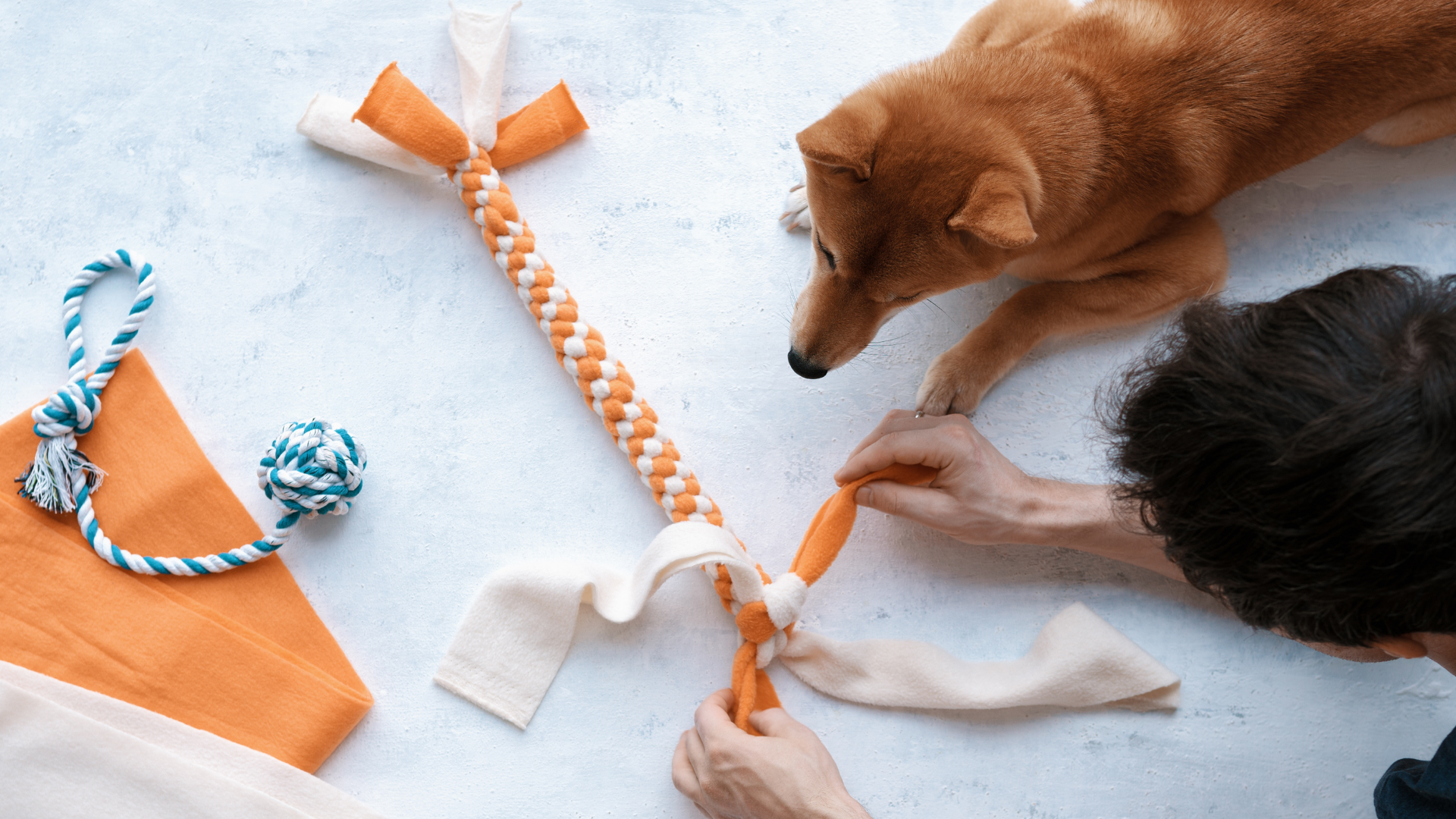
Simple DIY Dog Toy Projects
Making homemade dog toys with your kids can be a fun and rewarding experience for both you and your furry friend. Here are a couple of simple DIY dog toy projects that you can try at home.
No-Sew Fleece Tug Toy
This project is perfect for those who don't have a lot of sewing experience or don't have a sewing machine. All you need is some fleece fabric and a pair of scissors.
To make the toy, cut three strips of fleece fabric, each about 2 inches wide and 12 inches long. Tie a knot at one end of the strips to secure them together. Then, braid the strips together tightly and tie another knot at the other end. You can add more strips of fabric to make a longer toy or use different colors to make it more interesting.
The No-Sew Fleece Tug Toy is a great way to bond with your dog while also providing them with a fun and interactive toy.
Tennis Ball Treat Dispenser
This DIY dog toy is perfect for dogs who love to play and eat treats at the same time. All you need is a tennis ball, a sharp knife, and some of your dog's favorite treats.
To make the toy, carefully cut a small hole in the side of the tennis ball using the knife. Make sure the hole is big enough for the treats to fit through but not so big that they fall out easily. Then, fill the ball with treats and let your dog enjoy playing with it.
The Tennis Ball Treat Dispenser is a simple and easy way to keep your dog entertained and mentally stimulated while also rewarding them with treats.
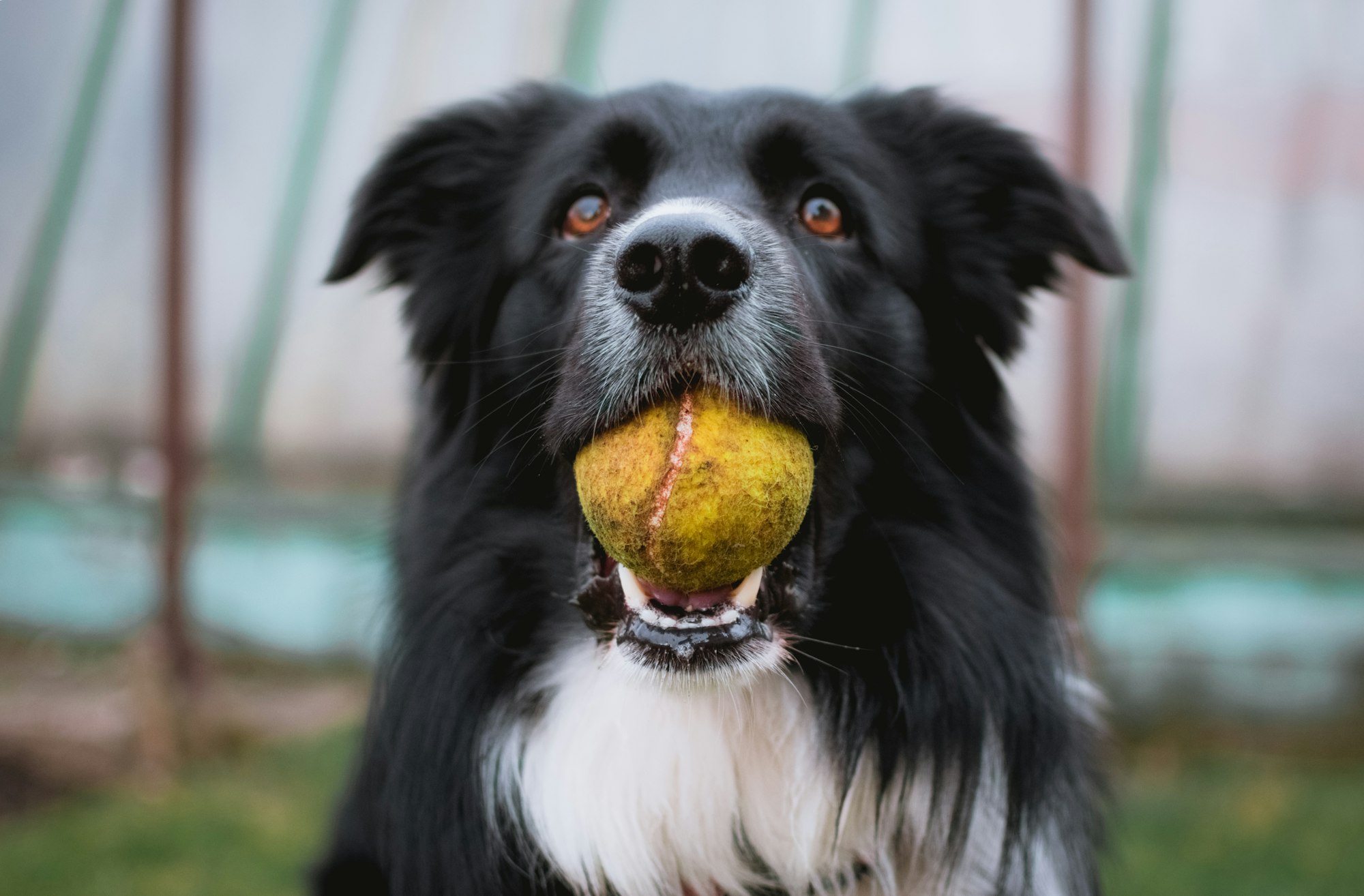
Interactive Dog Toys
Interactive dog toys are a great way to keep dogs entertained and mentally stimulated. Not only do they provide a fun activity for your dog, but they also help to improve their cognitive skills. Here are a few types of interactive dog toys that you can make with your kids.
Puzzle Feeders
Puzzle feeders are toys that require dogs to solve a puzzle to get to their food. They come in many different shapes and sizes, and can be made from a variety of materials. A simple puzzle feeder can be made by cutting holes in a plastic bottle and filling it with dry dog food. The dog will have to roll the bottle around to get the food to fall out of the holes.
Another option is to make a puzzle feeder out of a cardboard box. Cut holes in the box and fill it with treats or kibble. The dog will have to figure out how to get the food out of the box by using their nose or paws.
Hide and Seek Scent Games
Hide and seek scent games are a great way to challenge your dog's sense of smell. To play this game, hide treats around the house and encourage your dog to find them. You can also use scent games to teach your dog new commands, such as "find it" or "search".
To make a hide and seek scent game, start by hiding treats in easy-to-find locations. As your dog gets better at finding the treats, you can make the hiding spots more challenging. You can also use different scents, such as lavender or peppermint, to make the game more interesting for your dog.
Overall, interactive dog toys are a great way to bond with your dog and keep them entertained. By making these toys with your kids, you can also teach them about the importance of mental stimulation for dogs.
Maintenance and Upkeep
Cleaning Homemade Dog Toys
Keeping homemade dog toys clean is essential to prevent the buildup of bacteria and germs. It is recommended to clean the toys at least once a week, or more frequently if they become visibly dirty.
To clean homemade dog toys, simply wash them with warm water and soap. Use a soft-bristled brush to scrub away any dirt or debris that may be stuck to the toy. Rinse the toy thoroughly with clean water and allow it to air dry completely before giving it back to your furry friend.
It is important to note that some homemade dog toys may not be suitable for washing, such as those made of materials that can be damaged by water. In such cases, it is best to replace the toy regularly to prevent the buildup of bacteria and germs.

When to Replace Dog Toys
Even with regular cleaning, homemade dog toys can wear out over time and become a potential hazard to your pet. It is important to regularly inspect the toys for signs of wear and tear and replace them as necessary.
Some signs that a homemade dog toy may need to be replaced include:
- Torn or frayed fabric
- Loose or broken parts
- Cracks or splits in plastic or rubber toys
- Excessive wear and tear
Replacing homemade dog toys regularly not only ensures the safety of your furry friend but also keeps them engaged and entertained with new toys to play with.
Involving Your Kids
When it comes to making DIY dog toys with your kids, involving them in the process can be a fun and rewarding experience for both you and your children. Here are some tips to help get your kids involved in the crafting process.
Age-Appropriate Craft Tasks
Depending on the age of your child, you may need to adjust the level of difficulty of the craft tasks involved in making DIY dog toys. For younger children, simple tasks such as measuring and cutting fabric or string can be a great way to get them involved. Older children may be able to handle more complex tasks such as sewing or braiding.
It's important to keep in mind that safety should always be a top priority when crafting with children. Be sure to supervise your children at all times and provide them with appropriate tools and materials for their age and skill level.
Teaching Responsibility Through Pet Care
In addition to providing a fun bonding experience, making DIY dog toys with your kids can also be a great way to teach them about responsibility and pet care. By involving your children in the process of making toys for their furry friend, they can learn about the importance of providing their pet with mental and physical stimulation.
Encourage your children to take an active role in caring for their pet by involving them in tasks such as feeding, grooming, and exercising. By teaching your children about the responsibilities that come with pet ownership, you can help instill a sense of empathy and compassion in them that will last a lifetime.
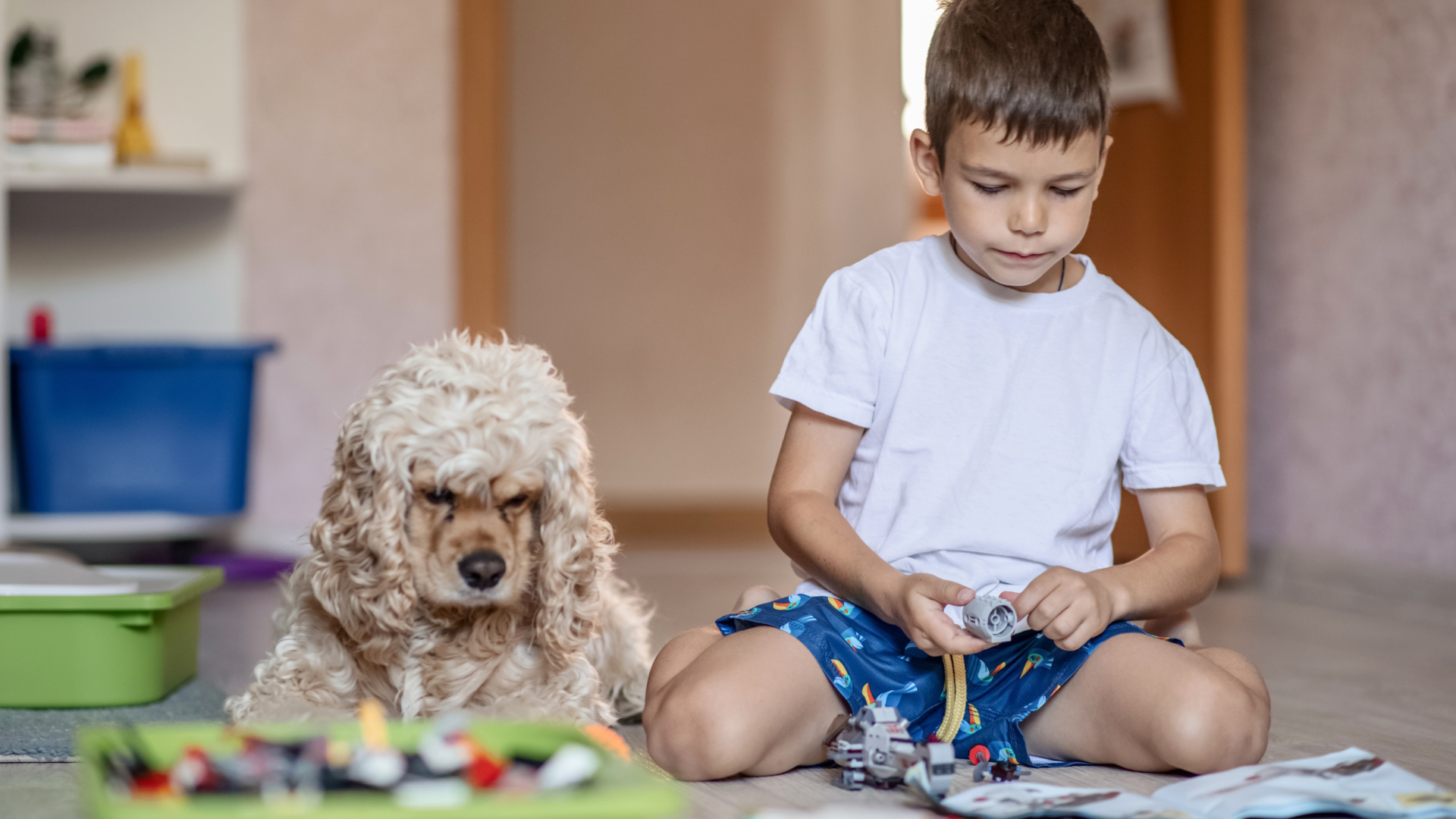
Sharing Your Creations
Dog moms who make DIY dog toys with their kids often enjoy sharing their creations with others. Here are some tips for sharing your DIY dog toys:
Social Media Sharing Tips
Social media is a great way to share your DIY dog toys with a wider audience. Here are some tips for sharing on social media:
- Use hashtags: Using relevant hashtags can help your posts get discovered by other dog lovers. Some popular hashtags for dog toys include #DIYdogtoys, #dogtoyideas, and #dogmomcrafts.
- Tag brands: If you use specific brands of materials in your DIY dog toys, consider tagging those brands in your social media posts. They may share your post with their followers, giving you even more exposure.
- Share in groups: There are many Facebook groups and forums dedicated to dog owners and DIY dog toys. Join these groups and share your creations with other members.
Organizing a Dog Toy Crafting Party
If you have friends who are also dog moms, consider organizing a dog toy crafting party. Here are some tips for hosting a successful party:
- Invite dog moms: Invite other dog moms who are interested in making DIY dog toys. You can reach out to friends, family, or even post an invitation in a Facebook group.
- Provide materials: Make sure you have plenty of materials on hand for everyone to use. You can purchase materials in bulk online or at a craft store.
- Have snacks: No party is complete without snacks! Consider providing some dog-friendly treats for the pups and some human-friendly snacks for the humans.
- Take photos: Take photos of everyone's creations and share them on social media. This is a great way to show off your party and inspire others to make their own DIY dog toys.
By sharing your DIY dog toys on social media and hosting crafting parties, you can inspire other dog moms to get creative and make their own toys for their furry friends.
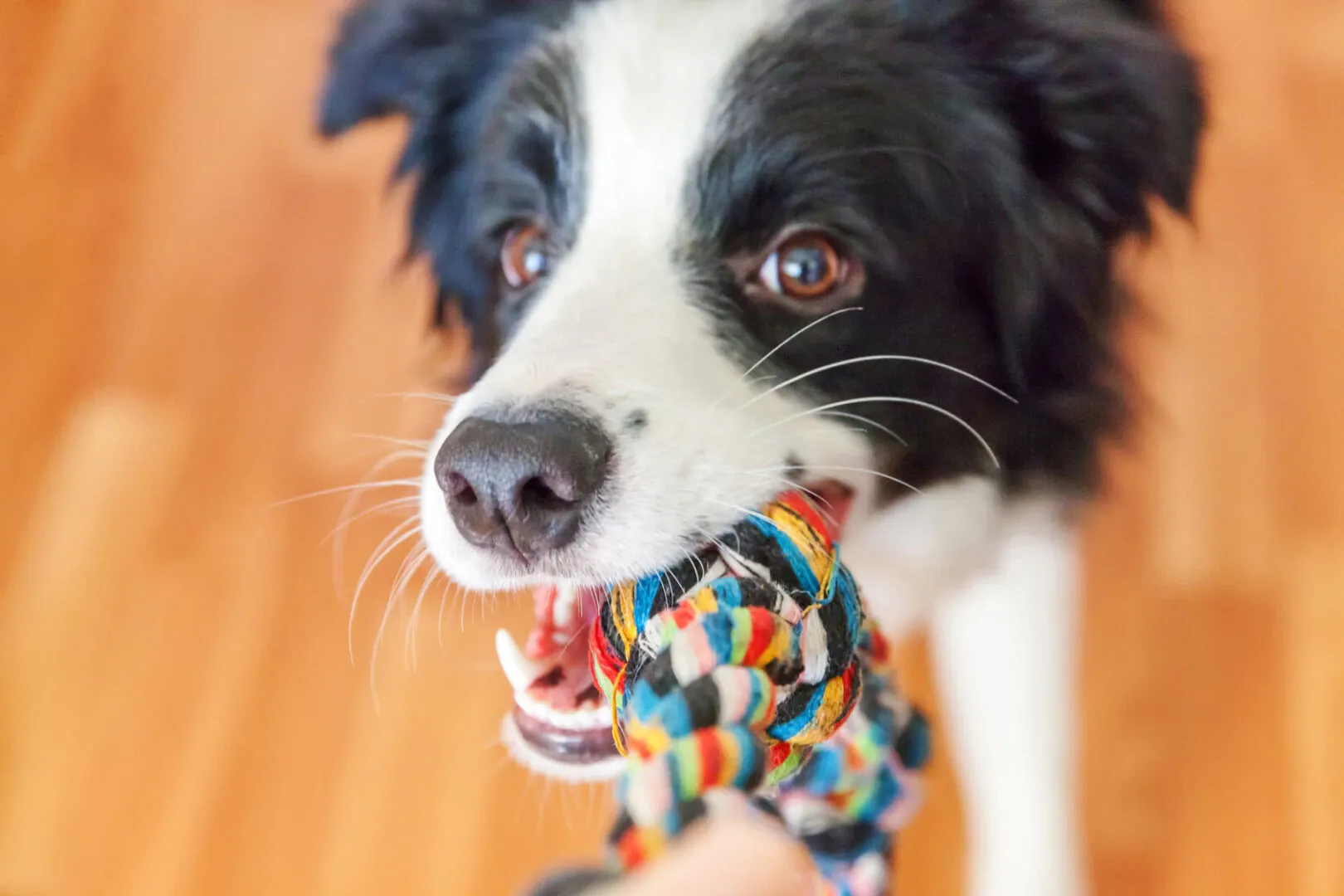
Conclusion
Crafting DIY dog toys with your kids is not only a creative endeavor but also a heartwarming way to foster love and responsibility toward pets. Get ready for hours of fun and wagging tails!
FAQs
- Is it safe for kids to make dog toys?
- Yes, with proper supervision and safe materials, crafting dog toys can be a safe and enjoyable activity for kids.
- How can I involve my toddler in making dog toys?
- Choose age-appropriate tasks like stuffing toys with treats or selecting materials under close supervision.
- What materials should I avoid when making DIY dog toys?
- Avoid using small parts, toxic materials, or anything that could be a choking hazard for dogs.
- How do I know if a DIY toy is suitable for my dog's size and breed?
- Consider your dog's size, chewing habits, and breed characteristics when selecting or making DIY toys.
- Can DIY dog toys save money compared to store-bought ones?
- Absolutely! DIY dog toys are often made from inexpensive or recycled materials, saving money while adding a personal touch.




